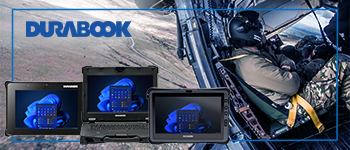Going solo
Craig Swallow on the challenge of managing the safety of lone workers
Within any organisation, the responsibility to protect employee safety and well-being should be a given, but there are cost and productivity benefits to be realised, too. Many different types of workers will become more productive and value their employer more if improvements to their safety standards are adopted. This responsibility should be naturally embedded and form part of an organisation’s goals and planning, as employee safety and security is paramount.
When planning, understanding the different risk profiles that staff have needs to be taken into consideration. For example, the risks for a lone worker are different from those of an executive travelling the globe and differ again for someone now working from home. These risks need to be assessed when analysing and implementing safety measures to protect employees.
Significant material costs associated with an incident can arise if the correct safety measures are not in place because management hasn’t addressed worker safety risks. In the UK, for example, cases where suitable processes and practices have not been implemented have seen organisations found guilty of corporate manslaughter (as a result of serious management failures that result in a gross breach of a duty of care) under the Corporate Manslaughter And Corporate Homicide Act. The act came into force in 2007 in the UK and can impose unlimited fines and imprisonment on guilty parties.
In 2015, two organisations were collectively fined over £1.1-million and individuals found negligent sentenced to between eight and 12 months in prison, following the death of a lone working employee who fell through the discoloured skylight of a warehouse. This incident could have been avoided had the correct safety procedures been implemented.
Similar approaches to increased fines and possible jail time are being seen in a number of other countries, where an increasing number of health and safety legislations are being introduced.
Safety consideration of employees aside, organisations have a brand reputation to build and maintain – and improve, if necessary – a continuous process that can take years. When incidents do occur, the detrimental effects to brand awareness and reputation can be catastrophic where convictions for corporate manslaughter are made – or the employer organisation has breached the terms of the Health and Safety at Work Act 1974. Reputations can be destroyed overnight.
An app-based GPS monitoring system can accurately locate employees in known danger or be used to help advise them if they move into at-risk areas. If an employee is in the vicinity of a terrorist attack or industrial accident, for example, the employer organisation should be able to monitor their location and check their safety status. The organisation can also communicate with the employee to understand their situation and give advice or organise help via emergency and security services if necessary.
The app – an example is the Vismo App – can operate on all smartphone and satellite phone platforms. Satellite phones and trackers are especially useful in areas where mobile coverage is minimal or unavailable.
The system comprises, at the employer’s end, a web-based monitoring system, with a dashboard view, allowing location monitoring and communication with app users. At the employee’s end, the app is activated on their smartphone device and runs in the background while automatically updating location fixes.
A key aspect of a monitoring system is the ability for lone workers, including employees travelling anywhere in the world on their own or as part of a disparate group, to alert their employer in the event of an emergency. Employees can do that through activating their app’s panic button.
That action will automatically trigger a live audio recording that’s sent to the system administrators, enabling them to understand the situation better and respond more effectively. They can share information with emergency and security services where appropriate. The system and those services use common mapping software and are therefore able to rapidly share information and liaise about emergency responses, rescue and evacuation included, should they be required.
Many monitoring systems have geo-fence capabilities, enabling a virtual fence to be placed around a certain area where an employee may be travelling to. As soon as lone workers – travelling executives, journalists and NGO staff or volunteers included – enter or exit one of these virtual fences, system administrators will be notified via the app and given advice if necessary.
Geo-fences can be placed around high-risk areas including airports, war zones and areas or cities of political instability; or a place of safety, for example the hotel where an app user is staying.
To enhance lone worker safety in such sectors as estate agency, district nursing, home care, hospitality (hotels etc.) and dispute resolution enforcement, or wherever life can be in danger, a timed check-in function in the app allows users to submit their immediate location information to their system administrator. Workers in sectors like these face increased risks whenever working alone on premises other than their employer’s, particularly when meeting people they have not met before. Ditto employees in zones of war and political instability.
The ‘timed’ element is, broadly speaking, a safety timer. It allows a user to allocate a timescale – eg 30 or 45 minutes or more to a job, and automatically triggers an alert if the user doesn’t explicitly cancel it by checking out (after first checking in). If a user doesn’t check out, an alert will be triggered and the administrator notified via SMS and email.
Enforcement officers in particular can be faced with potentially distressing and often confrontational situations when entering – or leaving – a property during the enforcement of a court order. In the estate agency, home care and hospitality sectors, employees working on their own can be vulnerable, highlighted in 1986 (and borne in mind since) after the continued disappearance of estate agent Suzy Lamplugh, when she was due to meet a client at an empty property and did not return from that appointment.
In any situation, at any time and regardless of the app user’s location, an administrator can seek ‘proof of life’ from the user by asking – in case the device has fallen into the wrong hands – questions that only they can answer correctly.
Other features of a monitoring system can include incident management and mass notification functions, both overseen by system administrators who can see them on their dashboard.
Incident management allows organisations to alert travelling staff to incidents that are a threat to their well-being. Alerts are sent via mass notification. Incident management integrates external data incident feeds into the system, ensuring that users of the app in any affected area are automatically identified and then rapidly notified via mass notification.
Mass notification allows the administrators to quickly send potentially critical information via personalised messages. The lone workers can respond with their safety status, enabling the administrators to quickly identify anybody in need and provide further assistance. The messages can be sent to either a wide group of people, workers in a specific geographic area or individuals, with message response options that can be customised to the situation.
Another feature, also visible on the dashboard, is points of interest (POI). A POI can be added to a location on a map’s dashboard to help administrators gain a deeper understanding of an employee’s location should an emergency arise. A POI can be anything, for example offices, a shop, train station or airport etc. It is a point on a map, with a radius around it of the administrator’s choosing: 100 feet, 100 metres, several miles/kilometres or more.
Implementing a location-based monitoring system can provide benefits to employees and organisations alike. From a legal perspective, it can help employers meet their legal and moral duty of care obligation to employees, and if an incident was to occur, an efficient communication process is already ready in place to be used. Two-way communication not only helps workers feel supported, but can more easily result in rescue.
Other benefits include reducing costs in areas of the organisation and increased productivity. A policy of supporting and protecting lone workers can help them feel more valued, and so increase loyalty. This result can reduce employee turnover and related costs including the cost of recruiting and training new starters. Increased insurance premiums for a mobile workforce can be avoided, and productivity might increase – certainly not drop if lives are saved and injuries avoided. Investing in lone worker safety has a very clear ROI in a number of respects.
By avoiding an incident, the employer organisation will also have escaped financial costs through loss of time at work, business interruption and any penalties from not complying with legislation. Or, by minimising an incident’s impact, any financial costs and penalties are likely to be greatly reduced.
Intangible factors are harder to measure accurately, but can have a significant impact through damaged or ruined brand reputation. Additionally, it’s generally accepted that workers who feel safer are happier, and happier workers tend to be more productive. Staff well-being is a major focus point for many employers. Improving staff safety, and being seen to do so, will help staff feel better about their employer and their work.
To conclude, organisations should have health and safety measures at the forefront of their goals and planning. The safety of employees affects many different parts of an organisation, not least the recruitment function within HR, brand reputation, the financial implications of an incident and, most importantly, the lone workers who need to be protected.
Mobile technology has been at the forefront of meeting various health and safety and corporate legislations and will continue to evolve to ensure that duty of care is optimised as much as is possible at the time. Due to the global COVID-19 pandemic, technology has to evolve with the ever changing situation. Implementing a monitoring solution to check the well-being of remote workers or understand how an employee is feeling could be the way forward.
Craig Swallow is the CEO of Vismo, a lone worker solution provider. With more than 18 years of experience within the lone worker security industry, he has wide-ranging knowledge in lone worker service innovation, marketing and business strategy.









